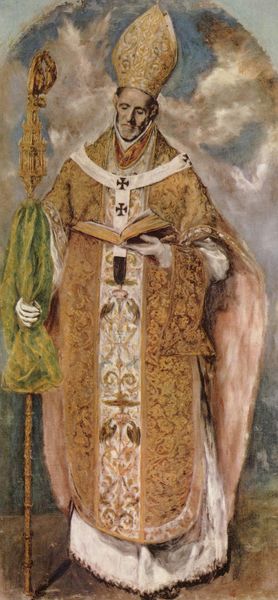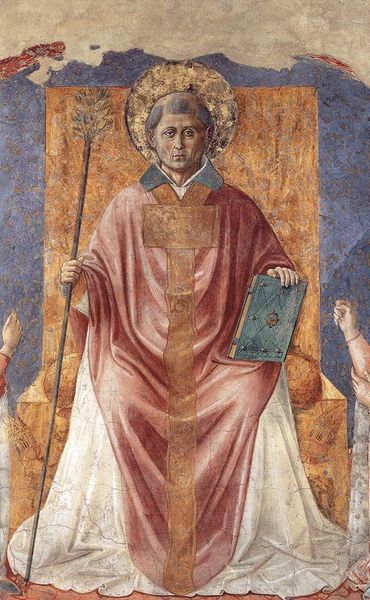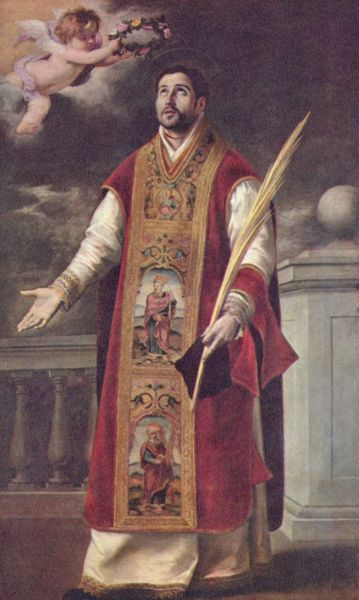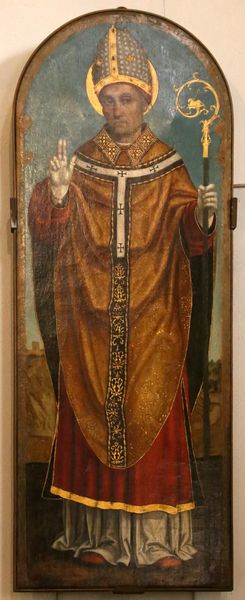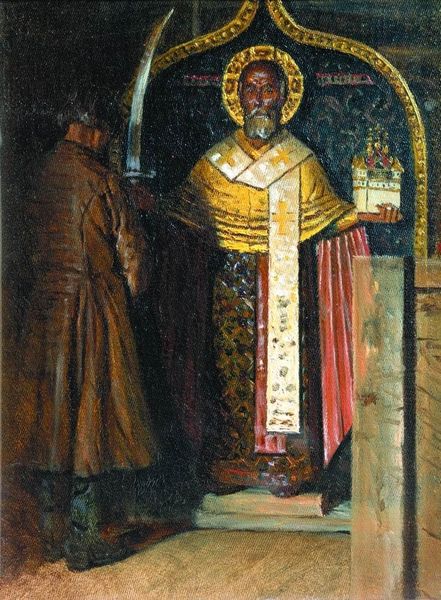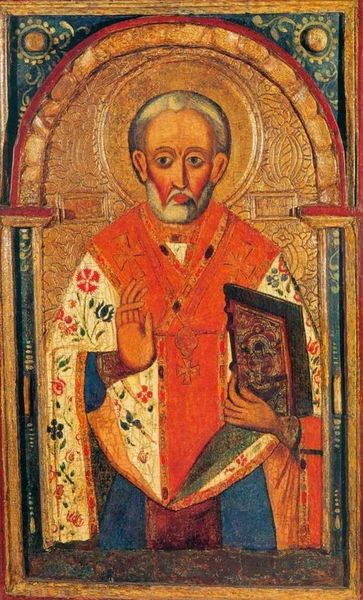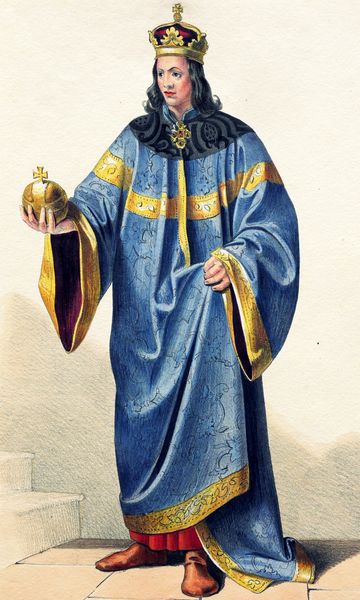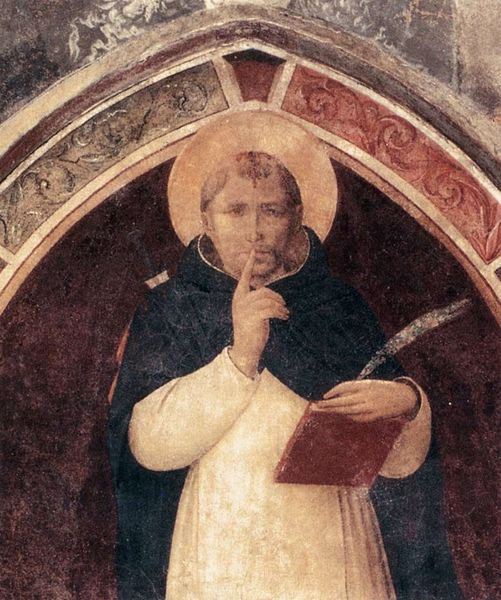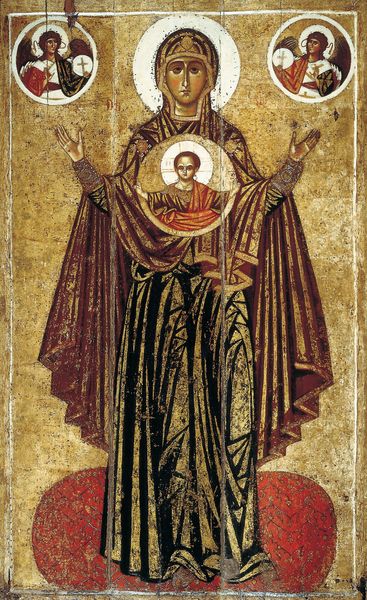
tempera, painting, sculpture
#
portrait
#
medieval
#
tempera
#
painting
#
sculpture
#
figuration
#
sculpture
#
international-gothic
Dimensions: 118.8 × 65.7 cm (46 3/4 × 25 7/8 in.)
Copyright: Public Domain
Curator: Let's turn our attention to Allegretto Nuzi's "Bishop Saint Enthroned," a tempera on panel work created between 1360 and 1370, currently residing here at the Art Institute of Chicago. Editor: Immediately, the bishop's commanding gaze strikes me. His expression seems both serene and weighty with unspoken knowledge, doesn’t it? I wonder what's going through his mind. Curator: What's interesting is to consider how this painting functions within its historical context. Nuzi was working in a time where artistic patronage was crucial; works like this served the dual purpose of devotion and reinforcing social hierarchies. Tempera, with its egg yolk base, afforded incredible detail and luminosity. Editor: The textures of his robe—particularly that ornamented band down the center—it’s all rendered with such loving detail. And that little figure kneeling to the lower left, it brings such depth and humility, it must be so interesting for researchers. I want to feel the panel beneath the colors! Curator: Absolutely, tempera lends itself well to gilding and precise detail work, seen clearly in the Bishop's elaborate mitre and robes, signifiers of his rank and power. Thinking of it in today's commodity and consumer culture, we see echoes of similar dynamics – the powerful wearing specific brands that signal the wearer's elite status, and works of art serving as luxury goods in a status play of wealth and good taste. Editor: Yes, it’s all surface gloss but it’s still meaningful! Looking at it now, I am drawn to the hands—his raised in blessing, a gesture frozen in time. It feels as though, as an artist myself, the making of such a figure is really difficult, if not a spiritual labor. It can make a modern artist very introspective and sensitive. Curator: A point well-taken, as the labor practices behind art have frequently gone unseen, which allows a modern critical reading. Thinking of labor, patronage, value. It reminds me that in contemporary galleries and artist collectives, we are seeing an important shift toward more diverse forms of artwork, art production, artistic media, as well as more diversity in curatorial projects and choices. It allows today's artists more visibility as the concept of Art broadens beyond the narrow traditions. Editor: Thank you for pointing that out, it feels refreshing, somehow. It really takes one back to re-appreciate where art-making comes from. Curator: Yes, thinking about labor always opens a world of complexity and appreciation.
Comments
No comments
Be the first to comment and join the conversation on the ultimate creative platform.
